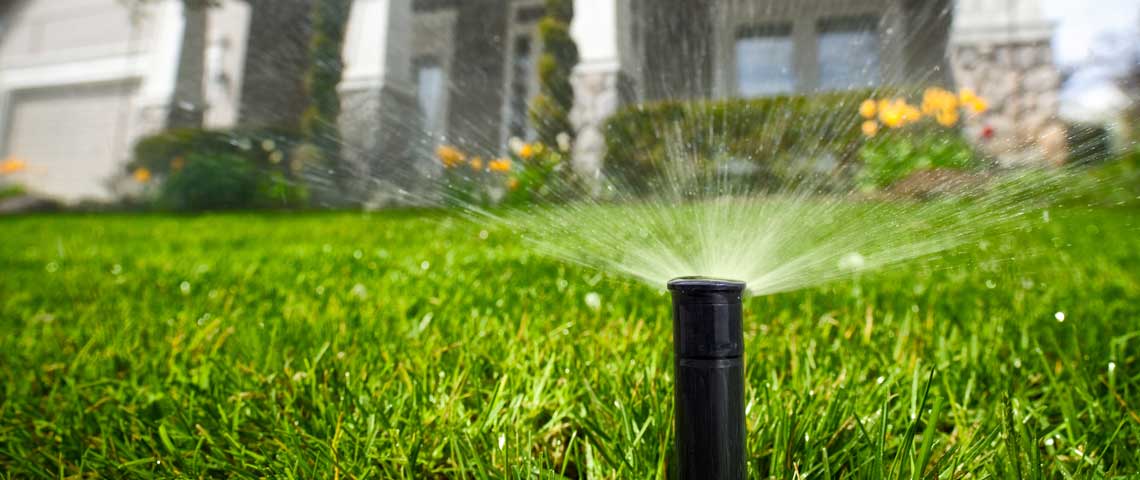How to Plant Grass Seed in a New Lawn
Starting a new lawn from scratch may seem like a formidable task, especially if you're new to home ownership or working on your first lawn. But planting a lawn from seed is easier than it seems at first glance. All you need is the willpower to make it happen—and good information to guide your steps.
Homeowners and lawn professionals have been trusting Pennington Seed for more than three generations. When Pennington says you can do this, you can. Just follow these 10 steps to plant a lawn from grass seed, and you can enjoy a thick, lush green lawn you'll be proud of:
- Time your planting right
- Test your soil
- Amend and improve your soil
- Choose the best seed
- Prepare the soil for planting
- Fertilize your soil
- Plant your seed
- Water your seed
- Maintain your new lawn
- Enjoy your new lawn
1. Time your planting right
Get your lawn started right by seeding at the best time to plant grass seed. For northern lawns, that time is fall and spring. For warm-season southern grasses, it's late spring and early summer.
Grasses peak in growth during these times, and moderate temperatures help seed germinate and take root. Working with nature to give grass an advantage gets your lawn started on the right foot.
2. Test your soil.
Take time for a simple soil test and you'll save yourself guesswork and wasted effort. Conditions in your soil, such as its pH level or percentages of organic matter, influence how well your new seed will grow.
Soil sampling is simple—and you'll feel like a DIY lawn pro. Plus, results and recommendations that come back from the soil lab will tell you what you're working with and what you need to do. Your county extension agent can help with test kits and info to get you started.
3. Amend and improve your soil, according to test results.
With your soil test results in hand, you're ahead of the game. You can fix your soil "just right" for healthy seedling growth. When soil pH is gets out balance, your grass can't take up nutrients, even if your soil is packed with what grass needs. Amendments fix that.
If soil is overly acidic, so pH is too low, your lawn may need lime to restore proper pH balance and nutrient availability. If your soil's short on organic matter, adding soil amendments such as compost upfront improves seed and grass growth down the road.
4. Choose the best seed.
Low-quality seed leads to a low-quality lawn. There's no way around that truth. Every bag of seed sold has a label attached that's known as the seed tag. The seed tag tells you the different grass varieties inside, along with important quality factors like germination rates and percentages of weed seeds.
That low-quality grass seed that seems like a great buy? You'll think differently when grass seed doesn't germinate, but weed seeds do. Buying quality grass seed produced by a trusted company is the most economical and satisfying choice in the end. With Pennington Seed, exclusive Penkoted seed technology also protects seed with a layer of fungicide and growth stimulant that ensures healthier, better growth from the start.
Your local retailer will generally have grass seed suited to where you live, so your lawn can handle your area's winter cold and summer heat. If your lawn has lots of shade and trees, look for labels that specific grass for shady lawns. With Pennington Smart Seed grass seed, you'll also improve your lawn's sustainability. Once established, Smart Seed saves you up to 30 percent more water than ordinary grasses, year after year.
5. Prepare the soil for planting.
Before you seed, take time to clear the area of anything that might interfere with seed growth. Remove rocks or debris left behind by construction or nature. Rake the area with a yard or garden rake to smooth the surface and eliminate dirt clods and high or low spots.
Avoid using any weed killer before or after seeding your new lawn. Residue can prevent seed from germinating or kill tender young grass plants. If weed killers have been used on your seeding spot, wait at least three weeks before you plant grass seed.

6. Fertilize your soil.
Newly germinated seed needs feeding, so have a fertilizer to meet that need. Pennington UltraGreen Starter Fertilizer 22-23-4, formulated especially to start new lawns, keep feeding your grass for up to three months. Spread fertilizer on your soil with a regular lawn spreader before you sow your seed. The product package will tell you what spreader settings and how much fertilizer to use.
Once your lawn gets rolling, Pennington Full Season Lawn Fertilizer 32-0-5 keeps on feeding your grass all season long.
Both these fertilizers protect against nitrogen loss to the environment, so the nutrients you add stay available to your seed.
7. Plant your seed.
Use a lawn spreader to distribute seed uniformly across your new lawn area. Just follow the instructions on your seed bag label, and you'll get your spreader settings and seeding rates right.
Once your seed is down, rake the area again to work seed into the soil about 1/8 to 1/4 inch deep. Seed needs light to germinate so don't plant too deep—and don't worry about birds eating your seed. Pennington's green seed color camouflages seed so birds leave it alone.

8. Water your seed.
Watering is the most crucial part of starting a new lawn. Water daily so the newly planted area stays moist—water twice daily, if needed. Water so the top 1/2 inch of soil remains consistently moist, but water doesn't stay puddled on the surface. Keep the area moist as seed germinates and your new grass grows to mowing height.
Depending on the type of grass you plant, germination can take between five and 21 days. Your product label will tell you what to expect. As the grass grow, gradually transition your watering to a regular lawn watering schedule. Established lawns generally need about 1 inch of water every week, from irrigation or from rainfall.

9. Maintain your new lawn.
New seed can take a month or two before it's ready for mowing. Wait until all your seed sprouts and grass grows about 1 1/2 times the recommended mowing height for your grass.
Once you mow, following best mowing practices and never take off more than one-third of the grass's height in a single mowing. Taking off too much as once affects the grass's food and energy reserves. As a general rule, don't use any weed killers or weed & feed fertilizers on your new lawn areas until they've been mowed three or four times.
10. Enjoy your new lawn.
Once you've mowed your new lawn three or four times, the roots are ready for some traffic. Take it easy on new grass the first growing season, but don't hesitate to enjoy all the benefits your sustainable lawn brings. Grass helps purify the air and water around you, and a beautiful lawn kicks up your home's curb appeal. Perhaps most of all, a healthy, well-maintained lawn provides a beautiful green backdrop to reconnect with nature and with family and friends.
With these ten simple steps, you're on your way to experiencing the satisfaction and pride that comes from creating a beautiful, thick, lush lawn. At Pennington, we're here every step of the way—from the finest grass seed to premium lawn care products to help your lawn thrive—so you can grow a lawn you're proud to call your own.


